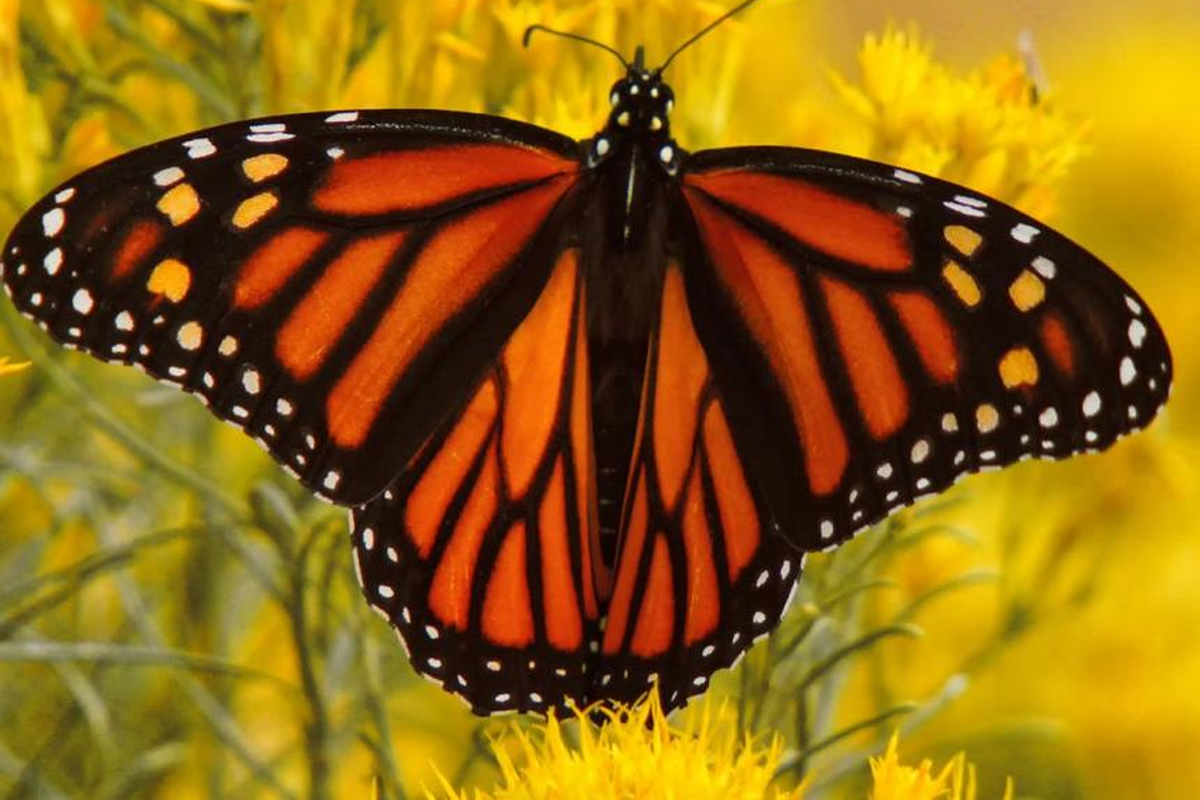This column reflects the opinion of the writer. Learn about the differences between a news story and an opinion column.
Gardening: Rare monarch butterflies flock to milkweed regional varieties

Yes, we have monarch butterflies in the Inland Northwest, but they aren’t common.
Monarch butterflies are an iconic representative for pollinator conservation. Much has been written about preserving habitat for this endangered butterfly by planting milkweed, the only food the butterfly’s distinctive striped larvae will eat. The female monarch lays eggs on the milkweed plant; they develop into stripped larvae that voraciously feed on the leaves until they spin into pale green chrysalises from which the adult monarchs emerge.
The primary population of monarch butterflies in North America spends summers in the American Midwest and Northeast and southern Canada before flying thousands of miles to their wintering grounds in a small patch of Mexican forest. A secondary population summers in Arizona, California, Nevada, Oregon, Washington, Idaho and Utah and winters in small pockets of forest along the central California coast. While we host part of the Western population, they are at the limit of their range here and are not common. Still, we need to encourage them by growing milkweed plants in our pollinator habitats.
The milkweed species, known by its Latin name as Asclepias, is a common native plant across North America. It is called milkweed because when broken, the stems produce a milky, sticky sap. The sap can be irritating to eyes and skin. There are dozens of different varieties within the species that are found across the continent. Here, we have two: showy milkweed, or Asclepias speciosa, and the less common narrowleaf milkweed, or Asclepias fascicularis. It is important to grow these two varieties here because that is what our monarch population has evolved with.
Both these varieties are found in dry to moist environments in meadows, fields, roadsides, open woods and along waterways. Showy milkweed is common in the wetter meadows at the Turnbull National Wildlife Refuge south of Cheney. Both plants grow to around three to four feet tall with clusters of pale pink and white flowers that bloom in June and July. The large, two to three-inch seed pods emerge in the late summer and scatter seed widely. Showy milkweed has large fuzzy leaves and hairy seedpods while narrowleaf milkweed has long, narrow leaves and smooth seedpods.
Growing milkweed isn’t difficult, but it does take some planning. It can spread widely under the right conditions. I originally planted mine on a dry bank below a well-watered bed. The plant found its way to the water and is now crowding out other plants. As pretty as it looks, I have to pull stems to keep it in check.
Finding our native milkweeds can be a challenge. They aren’t readily available in local nurseries in the spring and catalog, and online sources are usually smaller native plant nurseries. Unfortunately, many of these sources are more likely to offer the bright orange and yellow varieties that grow in the eastern U.S. Even if they are harder to find, it is worthwhile to add them to your mix of pollinator plants as other pollinators are heavily attracted to the flowers.